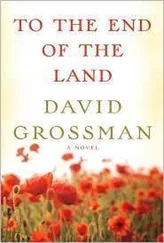Bagosh, against his will and judgment, but shamed, has begun clambering up onto the girder behind me, bumping the back of my Nikes with his noggin and making me breathe in big burning whiffs of his English Leather. He’s taking deep grunting breaths as he ascends, and because he’s a shrimp, has to struggle up on his bare knees to reach the red girder surface.
Once onto the flat I-beam, however, it’s easy to step along past the front window, holding to the siding panels, and to walk straight to the front door opening that gives entry to the house. Bagosh keeps crowding me on the girder, breathing unevenly, a couple of times saying, “Yes, yes, all right, this is fine now,” and smiling wretchedly when I look back at him. We’re only eight feet off the ground here and wouldn’t do any damage if we did a belly flop.
But there’s a nice new view to take in from here, one I’m happy to have and that makes the whole climb-up worthwhile, no matter what we discover inside. Getting a new view — even of Timbuktu Street — is never a waste of time. From here the community is briefly revisioned: Mike Mahoney down in the street, looking skeptically up at us; our three cars; Bagosh’s little closeted brood, all now watching us — the wife at the window, smiling a smile of disapproval. The view stresses the good uniformity of the houses, with their little crushed-marble front yards of differing hues (grassy green, a pink, two or more oceany blues). Few have real trees, only miniature Scotch pines and skimpy oak saplings. None have political placards (meaning the Republicans have won), though several still have their SAVE TIMBUKTU FROM EVIL DEVELOPERS!!! protests. Some yards have boats stored and others feature white statuary of Ole Neptune leaning on his trident — purchasable off the back of trucks on Route 35. No house has nothing, though the effect is to re-enforce sameness: three windows (some with decorative crime bars), center door, no garage, fifty-by-a-hundred-foot lots the original way the (not yet evil) developer designed it. A housing concept which permits no one ever to feel he was meant to be here, and so is happy to be, and happier yet to pack up and go when the spirit moves him or her — unlike Haddam, which operates on the Forever Concept but is really no different.
Up the street toward Ocean Avenue, where the 5-K racers have disappeared and the carillon tower at the RC chapel is just visible, some owners are out busying. A man and his son are erecting an Xmas tree in a front yard, where the MIA flag flies on its pole below the Italian tricolor. A man and wife team is painting their front door red and green for Yuletide. Across at 117, in the skimpy back yard, a wrestling ring’s been put up and two shirtless teens are throwing each other around, springing off the ropes, taking goofy falls, throwing mock punches, knee lifts and flying mares, laughing and growling and moaning in fun. Number 117, I see, is for sale with my competitor Domus Isle Realty and looks fixed up and spruced for purchase. To the west, the bay stretches out toward the scrim of Toms River far beyond the white Yacht Club mooring markers set in rows. A few late-season sailors are out on the water, seizing the holiday and the land breeze for a last go.
“Ahhhh, yes, now. This is very fine now, isn’t it?” Bagosh is close to my shoulder, taking the view, and has actually fastened ahold of my arm. This may be as far above ground as he’s been without walls around him. His English Leather is happily beginning to dissipate in the breeze. His womanish knees have smudges from clambering onto the girder. We’re outside the vacant front doorway, at a level where the sill comes to my waist. Mike, at street level, is frowning at the bay. He is envisioning better events than these.
“We have to go inside still,” I say. “You have to inspect your house.” This is purely punitive. I’ve, of course, already been in the house when it was attached to the ground and I was selling it to the Morris County Stevicks following the departure of the previous owners, the Hausmanns. Though climbing up and in constitutes a pint-size good adventure I didn’t expect and is much more rewarding than fighting with my son.
“I’ll certainly inspect it when these moving chaps finish,” Bagosh says, and widens his onyx eyes in a gesture of objection that seems to agree.
“You’ll own it by then,” I say, and start pulling myself over the metal sill strip that’s half-worked out of its screw holes and a good place to get a nasty cut.
“Yes. Well—” Bagosh casts a fevered frown down at his luxury barge, clearly wishing to be driving it away. He coughs, then laughs a little squealy laugh as I reach down from the doorway and haul him up into the house that will soon be his.
But if it’s good to see the familiar world from a sudden new elevation, it may not be to see inside a house on girders, detached from the sacred ground that makes it what it is — a place of safety and assurance. This is what Mike was trying to make me understand by saying nothing.
Down on the street, temps must be low forties, but inside here it’s ten degrees colder, and still and dank as a coal scuttle and echoey and eerily lit. It’s different from what I thought — without being sure what I thought. The soggy-floored living room-dining room combo (you enter directly — no foyer, no nothing) is tiny but cavernous. The stained pink walls, old green shag and picture-frame ghosts make it feel not like a room but a shell waiting for a tornado to sweep it into the past. Leaking gas and backed-up toilets stiffen the cold internal air. If I was Bagosh, I’d get in my Town Car and not stop till I saw the lights of snowy Buffalo. Good sense is its own reward. I may be losing my touch.
“O-kay! Well. Yes, yes yes. This is fine,” Bagosh says jauntily. We’re both too big for the cramped, emptied living room, our footfalls loud as thunder.
I walk through the kitchen door to a tiny room of brown-and-gold curling synthetic tiles, where there’s no stove, no refrigerator, no dishwasher. All have been ripped out, leaving only their unpainted footprints, the rusted green sink and all the metal cabinets standing open and uncleaned inside. There’s a strong cold scent in here of Pine-Sol, but nothing looks like it’s been scrubbed in two hundred years. Police enter rooms like this every day and find cadavers liquefying into the linoleum. It didn’t look like this when I showed it to the Stevicks.
Bagosh is heading down the murky hall that separates the two small bedrooms and ends in the bath — the classic American starter-home design. “Okay, this is fine,” I hear him say. I’m sure he’s frozen in his shorts. The Hausmanns lived in these rooms twenty years, raised two kids; Chet Hausmann worked for Ocean County Parks and Lou-Lou was an LPN in Forked River. Life worked fine. They were normal-size people, with normal-size longings. They bought, they saved, they accrued, they envied, they thrived and enjoyed life right through the Clinton administration. The kids left for other lives (though Chet “the Jet” Jr.’s currently in rehab #2). They grew restless for Dade County, where Lou-Lou’s parents live. Things seemed to be changing here — though they weren’t. So they left. Nothing out of the ordinary, except it’s hard to see how it could’ve happened inside these four walls, or, if it did, how things could look like this four months later. Empty houses go downhill fast. I should have been more vigilant.
I have a look out the kitchen window into the ditched-up and vacant back yard, and the square, fenced back yards of Bimini Street. Several houses there are closed and boarded for the season, though some have dogs chained up and clothes on the line. Up on Ocean Avenue, the noon carillon at Our Lady has begun chiming “O come, all ye faithful, joyful and triumphant—” Then the wail of a farther-off siren signals the hour. Sirens are rare in Sea-Clift in the off-season, though routine in summer.
Читать дальше












